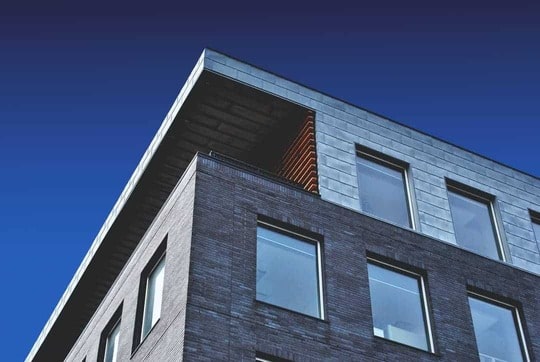Have you encountered someone who invested in an older property, only to see them pass up on claiming depreciation because they believed it exclusively applied to brand new properties? Or have you witnessed an investor tangled up in the web of different depreciation rates, trying to decide which to choose from?
Perhaps you need some help in figuring out how to benefit from depreciation?
If you’ve been nodding along, you’re not alone. Research shows that up to 80% of investors don’t claim depreciation and miss out on significant tax benefits simply due to confusion or misconceptions surrounding rental property depreciation rates – especially regarding older properties.
In this comprehensive guide, we’ll shed light on the concept of depreciation, explain how you can claim it, delve into its application for older properties, and clarify the various depreciation rates available for Australian rental property investors.
How Do You Calculate Depreciation on an Older Investment Property?
Depreciation is the gradual decline in the value of an asset over time due to wear and tear and aging.
When it comes to rental properties, the Australian Taxation Office (ATO) allows investors to claim depreciation as a tax deduction, helping to reduce their taxable income and potentially saving thousands of dollars each year.
You can claim two main types of depreciation deductions for your rental property:
1. Plant and Equipment
This category includes assets like carpets, appliances, and blinds with a limited effective life and can decline in value over time. For example, if you have a rental property with a built-in air conditioning system, you can claim depreciation on the cost of the system over its effective life.
2. Capital Works
Also known as building allowance or Division 43, this deduction covers the structural elements of a building, such as the construction costs, walls, roof, doors, and windows.
Unlike plant and equipment, capital works deductions are more specific to the property’s structure and have different rates depending on the year the property was built. So, when calculating capital works depreciation, you must consider the property’s age.
For example, on residential properties built between 18 July 1985 and 16 September 1987, the rental property depreciation rate is 4%. But for any properties built after 16 September 1987, the depreciation rate is 2.5%.

So, Can You Claim Depreciation Deductions on Older Properties?
Yes, you can claim tax deductions for depreciation on older rental properties, particularly for the structural component or capital works. In fact, you can claim capital works deductions for up to 40 years from the date of construction for properties built after 1987.
So, if your rental property was built in 1998, you can claim depreciation until 2038 (since the 40-year period began in 1998).
However, claiming depreciation on plant and equipment for older properties can be more complicated due to the changes in legislation that took effect on 9 May 2017.
Under these new rules:
- Investors who acquired a rental property before 9 May 2017 can continue to claim depreciation for both plant and equipment assets and capital works deductions as they did before the legislation change.
- For rental properties acquired on or after 9 May 2017, investors can only claim depreciation for plant and equipment assets if they directly purchased and installed brand-new assets from a retailer themselves.
So, if the assets were already in the property when you acquired them, you won’t be eligible to claim depreciation for those assets. However, you can still claim capital works deductions as usual.
Case Study: Shelly’s Rental Property Depreciation Journey
The best way to demonstrate just how much you can save by claiming depreciation deductions for your rental property, even an older one, is to share a client experience.
Meet Shelly.
Shelly bought a brand new property in 2013 for $500,000 and decided to rent it out in 2022.
The property generated a yearly rental income of $21,320, translating to a weekly rent of $410. Her rental property expenses, including interest repayments, management fees, rates, and maintenance, totalled $24,902.
Since Shelly started renting out the property in 2022, after the 2017 plant and equipment rule changes, she could not claim depreciation deductions for the existing plant and equipment assets (Division 40). However, she could still claim depreciation on the property’s capital works (Division 43) deductions.
So, based on her depreciation schedule, Shelly was eligible to claim $6,900 in depreciation for the capital works during her first year of using the property as an investment.
Let’s take a look at how much that would have saved her compared to if she didn’t order a tax depreciation schedule:
| Without a depreciation claim | With a depreciation claim of $6,900 | ||
| Annual Income ($410 x 52 weeks) | $21,320 | Annual Income ($410 x 52 weeks) | $21,320 |
| Annual expenses | $24,902 | Annual expenses | $24,902 |
| Pre-tax: Net loss (income minus expenses: $21,320 – $24,902) | -$3,582 | Pre-tax: Net loss (income minus expenses: $21,320 – $24,902) | -$3,582 |
| Total taxation loss | -$3,582 | Total taxation loss [net loss + depreciation: (-$3,582) + (-$6,900)] | -$10,482 |
| Tax refund (tax loss x 37% tax rate) | $1,325 | Tax refund (tax loss x 37% tax rate) | $3,878 |
| Annual costs of the investment property [net income + tax refund: (-$3,582) + $1,325] | -$2,257 | Annual income from the investment property [net income + tax refund: (-$3,582) + $3,878] | $296 |
| Weekly loss | -$43 | Weekly income | $6 |
| A difference of $49 per week/$2,553 per year | |||
Without claiming depreciation, Shelly faced a weekly out-of-pocket expense of $43. However, by leveraging tax deductions for the depreciation of her property, Shelly managed to eliminate her out-of-pocket costs entirely and even generated a modest weekly income of $6.
So, she saved $2,553 during her first year of using the property as an investment.
And the best part about Shelly’s depreciation schedule is its long-term validity – up to 40 years. As long as she continues to own and rent the property, Shelly can keep enjoying these savings until 2053.

What If I Renovated a Property Built Before 1985?
Given that you can only claim depreciation for up to 40 years of capital works deductions from the date of construction for properties built after 16 Sept 1987, if you recently purchased a house for investment purposes (i.e. in 2023) originally built before 1985, you will not be eligible to claim depreciation on the capital works.
Properties constructed between 15th September 1987 and 18th July 1985 come with certain depreciation restrictions, including their ineligibility for capital works deductions unless the owner has renovated the property after 1992.
So, you can claim depreciation on renovations from the date they are completed, which allows you to benefit from deductions on the improvements made to your property.
For example, if you own an older property built before 1987 and decide to upgrade it in 2022, you can begin claiming depreciation for the capital works related to the renovation from the completion date in 2022.
In this scenario, the depreciation deductions would apply to the structural improvements made during the renovation, such as a new kitchen or bathroom, and any new plant and equipment assets, like appliances, that you purchased and installed.
Case Study: Depreciation on a Renovated Property Originally Built in 1980
John purchased a charming old Queenslander built in 1980 for $395,000. He decided to carry out minor renovations, focusing on the bathrooms, kitchen, and lounge area.
Since the previous owner had already updated the appliances, John’s renovations only qualified for capital works deductions, not plant and equipment deductions.
According to his depreciation schedule, John could claim $1,800 in depreciation for the first year.
Without claiming depreciation, his property would have operated at a loss of $434. However, by claiming the depreciation, John reduced his taxable income, ultimately saving $624. As a result, instead of running at a loss, John’s property generated an annual income of $232.
How Far Back Can You Claim Depreciation on a Rental Property?
Now that you know older properties aren’t necessarily exempt from depreciation benefits, I’m sure you’re wondering if there is a possibility to backdate your depreciation claim and make up for some of the lost savings.
The good news is that you can.
The ATO allows property investors to amend their tax returns for up to two years to include previously unclaimed depreciation deductions. This means that if you have missed out on claiming depreciation for your rental property in the past, you can still take advantage of the tax benefits by amending your previous tax returns.
Always consult a qualified quantity surveyor to prepare a comprehensive depreciation schedule outlining the deductions you could have claimed in the past. Once you have the depreciation schedule, you can work with your tax professional to submit an amendment to your previous tax returns and claim the missed deductions.
How Do You Know What Depreciation Rates Apply?
You need to consult a qualified quantity surveyor to determine the applicable depreciation rates for your rental property.
Quantity surveyors specialise in estimating construction costs and depreciation of assets in a property.
They prepare comprehensive depreciation schedules tailored to your rental property, outlining the different depreciation rates for capital works, the effective life rates for plant and equipment assets, and include the different calculation methods (diminishing value method and prime cost method)
Don’t miss out on the potential tax savings for your rental property.
Contact Duo Tax Quantity Surveyors today to get started on your personalised depreciation schedule and maximise the deductions available for your investment. Or use our FREE rental property depreciation calculator to estimate how much you can save.

Key Takeaways
Despite misconceptions, investors can benefit from tax depreciation on older investment properties, including claiming tax deductions for depreciation on structural components and renovations and backdating previously unclaimed depreciation deductions.
A qualified quantity surveyor can prepare a comprehensive depreciation schedule outlining the available deductions and help investors maximise their tax savings.
With the right guidance, investors can unlock the financial potential of their rental property, regardless of its age.
Don’t miss out on maximising your rental property’s financial potential!
Contact Duo Tax Quantity Surveyors today for a personalised consultation and let our expert team help you uncover hidden tax deductions and increase your cash flow.

Ready to get started?
Talk to one of our friendly property experts to get a free quote or more Information.










